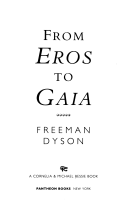The Promotion of the Apollo Program
The success of Apollo was mainly due to the fact that the project was conceived and honestly presented to the public as an international sporting event and not as a contribution to science. The order of priorities in Apollo was accurately reflected by the first item to be unloaded after each landing on the Moon's surface, the television camera. The landing, the coming and going of the astronauts, the exploring of the moon's surface, the gathering of Moon rocks and the earthward departure, all were expertly choreographed with the cameras placed in the right positions to make a dramatic show on television. This was to me the great surprise of the Apollo missions. There was nothing surprising in the fact that astronauts could walk on the Moon and bring home Moon rocks. There were no big scientific surprises in the chemistry of the Moon rocks or in the results of magnetic and seismic observations that the astronauts carried out. The big surprise was the quality of the public entertainment that the missions provided. I had never expected that we would see in real time astronauts hopping around in lunar gravity and driving their Rover down the Lincoln- Lee scarp to claim a lunar speed record of eleven miles per hour. Intensive television coverage was the driving force of Apollo. Von Braun had not imagined the possibilities of television when he decided that one kilohertz would be an adequate communication bandwidth for his Mars Project.
Notes:
It was carefully choreographed and promoted like a sporting event.
Folksonomies: space exploration nasa
Taxonomies:
/business and industrial/aerospace and defense/space technology (0.466394)
/art and entertainment (0.350736)
/art and entertainment/movies and tv/television (0.235622)
Keywords:
Moon rocks (0.998796 (positive:0.379112)), sporting event (0.823305 (positive:0.444684)), international sporting event (0.777107 (positive:0.200800)), home Moon rocks (0.759224 (positive:0.279308)), big scientific surprises (0.709880 (positive:0.359471)), adequate communication bandwidth (0.703194 (neutral:0.000000)), lunar speed record (0.692399 (negative:-0.284043)), Intensive television coverage (0.688865 (neutral:0.000000)), Lincoln- Lee scarp (0.672066 (negative:-0.284043)), astronauts (0.581664 (positive:0.004156)), earthward departure (0.539734 (positive:0.498556)), Apollo Program (0.522018 (positive:0.688568)), great surprise (0.519338 (positive:0.697273)), big surprise (0.497389 (positive:0.532867)), television camera (0.484259 (neutral:0.000000)), lunar gravity (0.481466 (negative:-0.284043)), right positions (0.478302 (positive:0.818591)), Von Braun (0.474158 (neutral:0.000000)), Apollo missions (0.473772 (positive:0.697273)), seismic observations (0.469581 (positive:0.359471)), real time (0.458826 (negative:-0.284043)), public entertainment (0.456824 (positive:0.532867)), Mars Project (0.452712 (neutral:0.000000)), landing (0.330212 (neutral:0.000000)), fact (0.295922 (positive:0.240054)), surface (0.293796 (positive:0.401091)), priorities (0.262150 (neutral:0.000000)), contribution (0.257563 (positive:0.200800)), possibilities (0.253144 (neutral:0.000000)), Promotion (0.252857 (positive:0.688568))
Entities:
Apollo:City (0.900977 (positive:0.444684)), Apollo missions:Organization (0.666064 (positive:0.615070)), Von Braun:Person (0.380829 (neutral:0.000000)), Lincoln- Lee scarp:GeographicFeature (0.313028 (negative:-0.284043)), real time:FieldTerminology (0.277473 (negative:-0.284043)), eleven miles per hour:Quantity (0.277473 (neutral:0.000000)), one kilohertz:Quantity (0.277473 (neutral:0.000000))
Concepts:
Moon (0.953273): dbpedia | freebase
Apollo 11 (0.787205): geo | dbpedia | freebase | opencyc | yago
Apollo program (0.673605): website | dbpedia | freebase | yago
Eugene Cernan (0.548088): website | dbpedia | freebase | yago
Apollo 17 (0.524310): geo | dbpedia | freebase | yago
Neil Armstrong (0.509331): website | dbpedia | freebase | opencyc | yago
Apollo 15 (0.470771): geo | dbpedia | freebase | yago
Apollo 14 (0.468767): geo | dbpedia | freebase | yago





